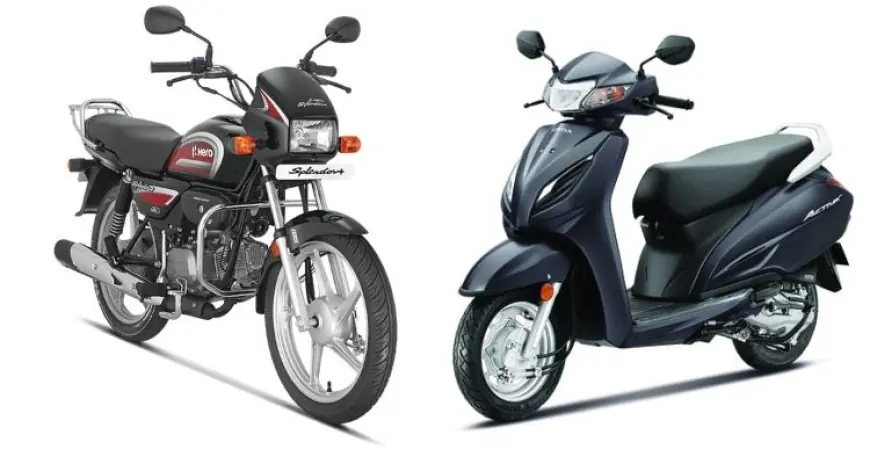Vietnam Two Wheeler Market 2030: Segment Insights
Amid global climate concerns and rising air pollution in urban zones, Vietnam is increasingly embracing electric two-wheelers.

The Vietnam Two Wheeler Market is undergoing a transformational shift driven by a convergence of consumer trends, electrification, technological innovation, and policy-driven momentum. According to TechSci Research, the market was valued at USD 9.21 billion in 2024 and is projected to reach USD 14.78 billion by 2030, growing at a compound annual growth rate (CAGR) of 8.2% during the forecast period. As Vietnam positions itself as a strategic player in the Southeast Asian mobility ecosystem, the two-wheeler market is becoming a focal point of investment, innovation, and infrastructure development.
Emerging Trends in Vietnam Two Wheeler Market
1. Rise of Electric Two-Wheelers:
Electric two-wheelers are reshaping Vietnam’s urban mobility. This trend is largely driven by the government's green transportation vision, increasing environmental awareness, and cost-efficiency benefits for end-users. Major cities such as Ho Chi Minh City and Hanoi are witnessing pilot programs for e-scooter sharing, battery swapping infrastructure, and clean transport subsidies.
2. Localization of Manufacturing:
Vietnam's 'Make in Vietnam' initiative is attracting foreign OEMs to set up local assembly and manufacturing units. At the same time, domestic firms like Dat Bike and PEGA are investing heavily in R&D to build electric drivetrains, controllers, and smart tech in-house. This reduces cost, boosts job creation, and enhances supply chain resilience.
3. Fintech Integration and Mobility-as-a-Service (MaaS):
With rising smartphone penetration and the popularity of digital wallets, fintech integration is enabling new ownership models such as leasing, subscription-based services, and gig-economy platforms. Consumers now prefer access over ownership, especially urban millennials and Gen Z riders.
4. Smart and Connected Two-Wheelers:
Telematics, IoT, GPS-based navigation, and mobile app integrations are becoming standard in high-end models. Riders seek performance monitoring, theft detection, route optimization, and remote diagnostics, which increase customer satisfaction and OEM competitiveness.
5. Focus on Lightweight Urban Mobility:
Compact, lightweight two-wheelers that are easy to maneuver in Vietnam’s dense traffic conditions are in high demand. As urbanization accelerates, manufacturers are designing vehicles that are optimized for short-range commutes and narrow roads.
Download Free Sample Report: https://www.techsciresearch.com/sample-report.aspx?cid=8186
Market Drivers
1. Government Policies and Incentives:
Vietnam’s government is playing a proactive role by offering tax breaks, import duty waivers, and R&D subsidies to promote electric vehicle production. Local authorities are also supporting pilot zones for electric mobility, especially in Central and Northern regions.
2. Environmental Awareness:
Air pollution and carbon emissions in major Vietnamese cities have prompted both regulatory and consumer-level action. A shift from ICE vehicles to EVs is seen as a necessary solution to address environmental challenges.
3. Urbanization and Last-Mile Delivery Boom:
Rapid urbanization and the boom in e-commerce and food delivery services have made two-wheelers the backbone of last-mile logistics. Companies are bulk-purchasing two-wheelers for their fleets, creating robust demand.
4. Affordability and Fuel Efficiency:
Two-wheelers remain a cost-effective and fuel-efficient mobility solution, particularly in Vietnam’s middle-income population. The economic practicality of owning a scooter or motorcycle makes them indispensable.
5. Infrastructure Development:
The expansion of road networks, EV charging stations, and battery-swapping centers is laying the groundwork for scalable electric two-wheeler deployment. These infrastructure developments are removing barriers to adoption.
Industry Key Highlights
- Market Valuation: USD 9.21 Billion in 2024, projected to grow to USD 14.78 Billion by 2030.
- CAGR: Strong projected CAGR of 8.2% over 2024–2030.
- Dominant Vehicle Type: Scooters/Mopeds lead due to their maneuverability, fuel efficiency, and urban practicality.
- Top Region: Central Vietnam emerges as the fastest-growing region with urbanization, tourism, and e-mobility pilots.
- Propulsion Shift: Gradual transition from ICE to Electric propulsion due to policy and environmental drivers.
Future Outlook
The Vietnam Two Wheeler Market is on a resilient growth trajectory. The electrification of personal and commercial fleets is expected to accelerate, supported by policy momentum and cost dynamics. Emerging Vietnamese brands are gaining confidence and global partnerships are expected to rise, bringing in new technology and investment. Urban mobility models will continue evolving, driven by lifestyle changes and gig economy needs. The convergence of fintech, smart technologies, and e-commerce logistics will reshape not just what consumers ride, but how they access mobility.
10 Benefits of the Research Report
- Market Size Estimation: Provides historical, current, and projected market values.
- Segment Analysis: Breaks down market by vehicle type, engine size, propulsion, and region.
- Growth Drivers: In-depth exploration of factors fueling demand and expansion.
- Competitive Landscape: Profiles key players with SWOT and financial data.
- Policy Insights: Detailed coverage of government incentives and regulations.
- Technology Trends: Analysis of IoT, electric drivetrains, and smart mobility features.
- Consumer Behavior: Insights on rider preferences and changing ownership models.
- Investment Opportunities: Identifies areas of growth for OEMs, investors, and service providers.
- Regional Focus: Evaluates performance of key regions with growth forecasts.
- Strategic Recommendations: Actionable guidance for market entry, expansion, and diversification.
Competitive Analysis
Honda Vietnam continues to dominate the market with a comprehensive product portfolio and strong brand equity. It leads in both ICE and hybrid segments and is increasingly investing in EV R&D.
Yamaha Motor Vietnam offers competitive urban models and is known for its design and fuel efficiency. Its strategic partnerships for local manufacturing give it a cost advantage.
SYM Vietnam and Suzuki Vietnam cater to value-conscious consumers in both urban and rural segments. Their products are well-regarded for durability.
Piaggio Vietnam leads in the premium scooter category with a focus on urban fashion and performance.
VinFast, a homegrown EV leader, is aggressively expanding its electric scooter lineup, supported by robust R&D and smart vehicle tech.
Dat Bike and PEGA Vietnam are new-age domestic players prioritizing 100% electric models. Their focus on high torque motors and in-house tech makes them agile and innovation-driven.
Ducati Vietnam represents the luxury motorcycle segment, appealing to niche premium consumers.
Kymco Vietnam focuses on mid-range scooters with good design aesthetics and growing electric options.
Together, these companies are shaping a competitive landscape characterized by innovation, localization, and strategic investment in both hardware and connected services.
This comprehensive outlook affirms that the Vietnam Two Wheeler Market is entering an inflection point, where electrification, urbanization, and tech-savvy consumers will redefine the mobility paradigm. Market stakeholders must stay attuned to shifting dynamics, evolving regulatory frameworks, and disruptive entrants to seize long-term value in this high-potential market.
Contact Us-
Mr. Ken Mathews
708 Third Avenue,
Manhattan, NY,
New York – 10017
Tel: +1-646-360-1656
Email: [email protected]
Website: www.techsciresearch.com
What's Your Reaction?
 Like
0
Like
0
 Dislike
0
Dislike
0
 Love
0
Love
0
 Funny
0
Funny
0
 Angry
0
Angry
0
 Sad
0
Sad
0
 Wow
0
Wow
0



















































